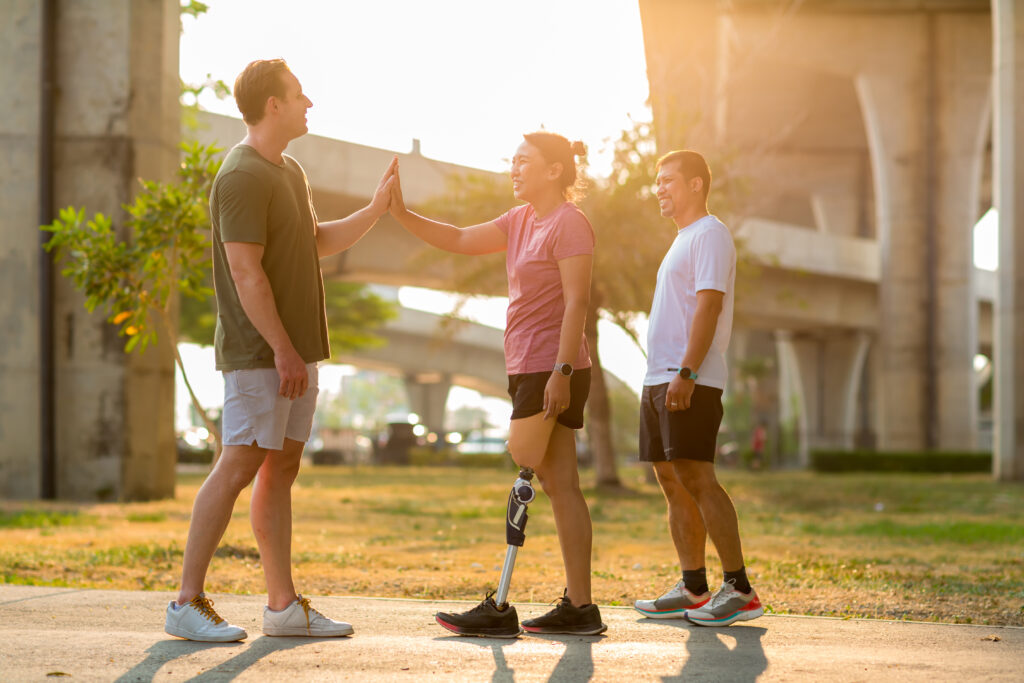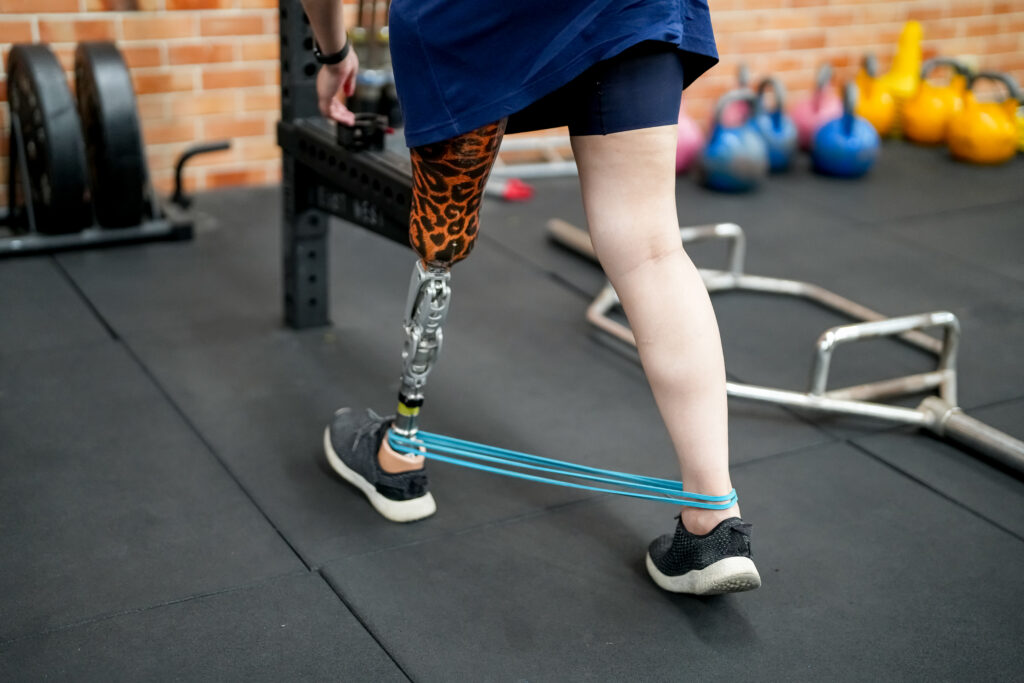Finding Balance After Amputation
Support for amputees is crucial in the days, weeks, and months following surgery. Life after amputation brings both physical and emotional challenges. Adjusting to a new routine can feel overwhelming, especially when tasks that were once second nature now require different approaches. But with the right support, both the body and mind can adapt and thrive.
At Around and About Inc., we understand that every amputee’s journey is different. Whether you’ve recently undergone surgery or are several months into recovery, finding a rhythm that supports both your physical health and emotional well-being is essential. This guide explores practical strategies to help you regain stability, rebuild confidence, and move forward with purpose.
Redefining Daily Routines After Limb Loss

After an amputation, even the most basic daily activities—like getting dressed, navigating your home, or preparing meals—can feel unfamiliar. This phase often requires both physical therapy and mental flexibility.
Rehabilitation starts by breaking routines into manageable steps. Therapists help amputees relearn balance, body mechanics, and coordination. Occupational therapy becomes key in adapting home environments, building new habits, and teaching energy conservation techniques. The goal isn’t to return to your old routine—it’s to create a new one that works for your lifestyle and mobility goals.
Many patients also find it helpful to structure their day with consistency. Keeping a routine with built-in rest, mobility sessions, and therapeutic exercises not only supports healing—it also restores a sense of control and purpose.
Emotional Support: A Critical Part of Recovery
Adjusting to limb loss involves more than physical healing. It’s common to experience a range of emotions, from grief and frustration to hope and pride. Understanding these feelings and having a space to express them is vital.
At Around and About Inc., we’ve seen the powerful impact that emotional support can have on long-term recovery. Some individuals benefit from peer support—connecting with other amputees who have walked a similar path. Others may prefer private counseling to work through the emotional shifts that come with a new identity and daily challenges.
If you haven’t yet, we recommend reading Amputation Recovery: Your First 90 Days After Surgery, where we explore the emotional rollercoaster many patients experience during the early stages of healing. That article also offers useful insights for loved ones and caregivers who want to be part of the support process.
Physical Therapy as a Foundation
No two rehabilitation journeys are alike, but one constant remains: physical therapy plays a central role in helping amputees regain independence. Therapy doesn’t end once the stitches heal or once the prosthetic arrives, it evolves with you.
Therapists tailor your care plan to your unique needs, which may include strength building, balance training, gait retraining, and pain management. Over time, this support enables you to move more freely, with less discomfort and greater confidence. In the process, many patients rediscover a sense of normalcy in their day-to-day routines.
At Around and About Inc., our therapy team works hand-in-hand with prosthetists and care coordinators to ensure that your physical recovery supports your emotional wellness and vice versa. Learn more about our services here.
The Role of a Supportive Care Team
Recovery is never a solo process. One of the most powerful resources an amputee can have is a care team that understands both the technical side of rehabilitation and the human side of healing.
That team may include a physical therapist, occupational therapist, prosthetist, primary physician, and mental health counselor. At Around and About Inc., we bring these perspectives together to help you make decisions about prosthetics, navigate insurance, and stay on track with recovery—all while prioritizing your long-term well-being.
When communication is seamless and support is comprehensive, recovery feels less overwhelming and more achievable.
Small Wins Lead to Big Progress

It’s important to recognize and celebrate the small victories along the way. Whether it’s walking a few extra steps, managing pain better than the day before, or simply feeling more like yourself again, each milestone is a step forward.
For many patients, these small wins build the confidence needed to set new goals and push past mental and physical barriers. Tracking progress, journaling your experiences, or sharing them with a support group can help you see how far you’ve come, even on the tough days.
Additional Resources and External Support
There are many helpful guides and tools available to amputees who are seeking extra support. One trusted source is The National Limb Loss Resource Center, operated by the Amputee Coalition. This site offers information on peer support, prosthetic care, advocacy, and emotional wellness.
We also recommend staying in touch with your therapy and care team regularly. As your lifestyle, goals, and prosthetic needs change, so should your support plan.
A New Chapter Starts Here
Adjusting to life after amputation doesn’t happen overnight, but you don’t have to go through it alone. At Around and About Inc., we offer personalized care and unwavering support every step of the way. Our team is here to help you rebuild routines, restore strength, and rediscover joy in your daily life.
If you’re ready to take the next step toward confident, supported living, reach out to us today. Let’s build your new routine together.

